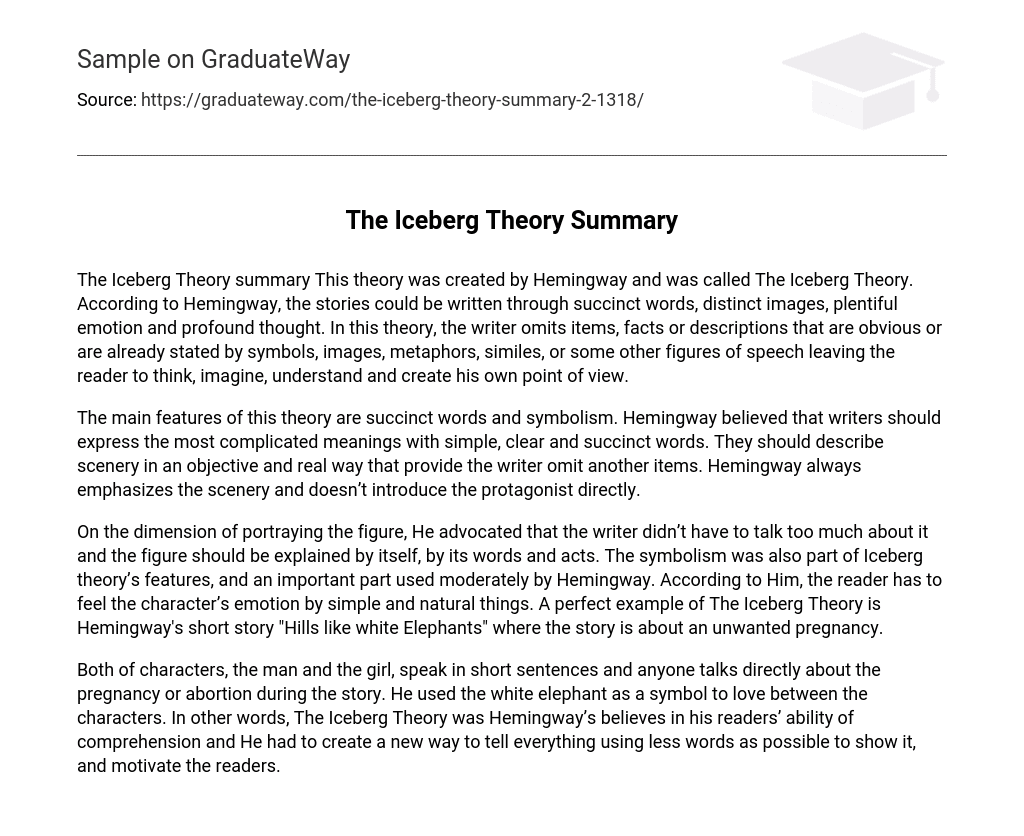Devised by Hemingway, The Iceberg Theory emphasizes brevity, vivid imagery, abundance of emotion, and profound thinking as means of storytelling. This theory involves the omission of self-evident details or descriptions, which are already conveyed through symbols, metaphors, similes, and other figures of speech. This approach encourages readers to engage in critical thinking, visualizing, comprehending, and developing their own perspectives.
Hemingway’s theory emphasized the use of succinct words and symbolism to convey complex meanings. According to him, writers should employ simple, clear, and concise language to express themselves. Additionally, Hemingway advocated for describing scenery objectively and realistically, often excluding extraneous elements. In his works, he placed a strong emphasis on the scenery rather than introducing the protagonist directly.
According to Hemingway, when it comes to portraying the figure, the writer should not have to discuss it extensively. The figure should be able to explain itself through its words and actions. Symbolism was also a component of the Iceberg theory and was utilized by Hemingway in moderation. Hemingway believed that the reader should feel the character’s emotions through simple and natural elements. One prime example of the Iceberg Theory is Hemingway’s “Hills like white Elephants,” which revolves around an unwanted pregnancy.
Both characters, the man and the girl, communicate through short, direct sentences without directly mentioning pregnancy or abortion. Hemingway used the white elephant as a symbol for their love. The Iceberg Theory reflects Hemingway’s belief in his readers’ comprehension ability and his need to convey everything using as few words as possible to engage and motivate readers.





